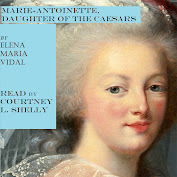Traditions are established and endure for a reason. Fundamentally, they simplify life by giving structure, boundaries, and expectations. It is easier for people to navigate in the realm of tradition. But traditions begin to be endangered when people forget their purpose, when people forget where they came from or why they are observed, when people forget what they mean or symbolize.Share
What would happen if I were to get into a time machine, go back to 1940, and ask the people of the parish some of these questions: Why do women wear hats and veils while men do not cover their heads? Why do we kneel to receive Communion? Why is the Mass in Latin? Why does the priest face toward the altar? Why are all these things done this way? I suspect I would get answers like this one: “I dunno, we just do it that way. Why don’t you ask the priest?”
I wonder if the first step in the loss of a tradition occurs when it no longer makes conscious sense to people, when it is no longer clear to them why something is done, when all that they can say about it is “That’s just what we do.”
At some point traditions run the risk that they become wooden and rote, and we find that we are sifting through the ashes of an old fire that has largely gone out. Unless we fan into flames the gifts of God’s love (cf 2 Tim 1:6), our love and appreciation of these things grows cold and their beauty fades. And then when someone asks, “What is this thing?” we reply, “What, that old thing?” And then the suggestion that we “get rid of it” receives a cursory nod of agreement and the response, “Sure, that’s fine; get rid of it.”
But the process begins with forgetfulness. And forgetfulness leads to a lack of understanding, which then gives way to a lack of appreciation. All this culminates in an almost gleeful dismissal of the old things and of the now-tarnished traditions that once sustained and framed our lives. (Read more.)
History of Advent
2 days ago

















No comments:
Post a Comment